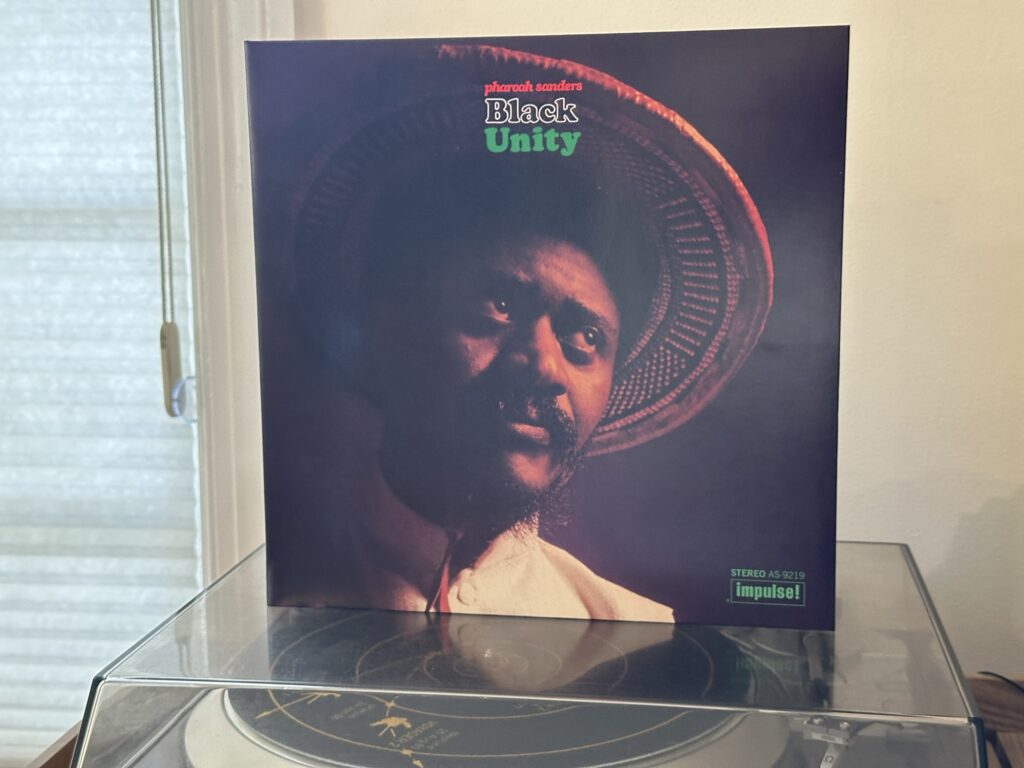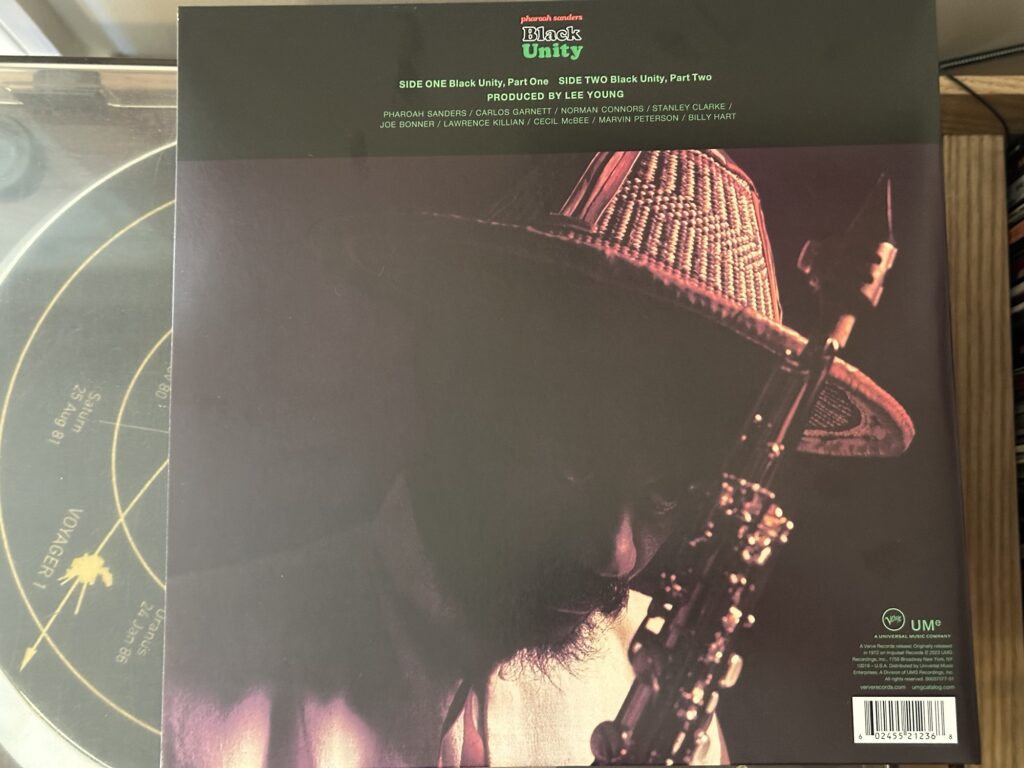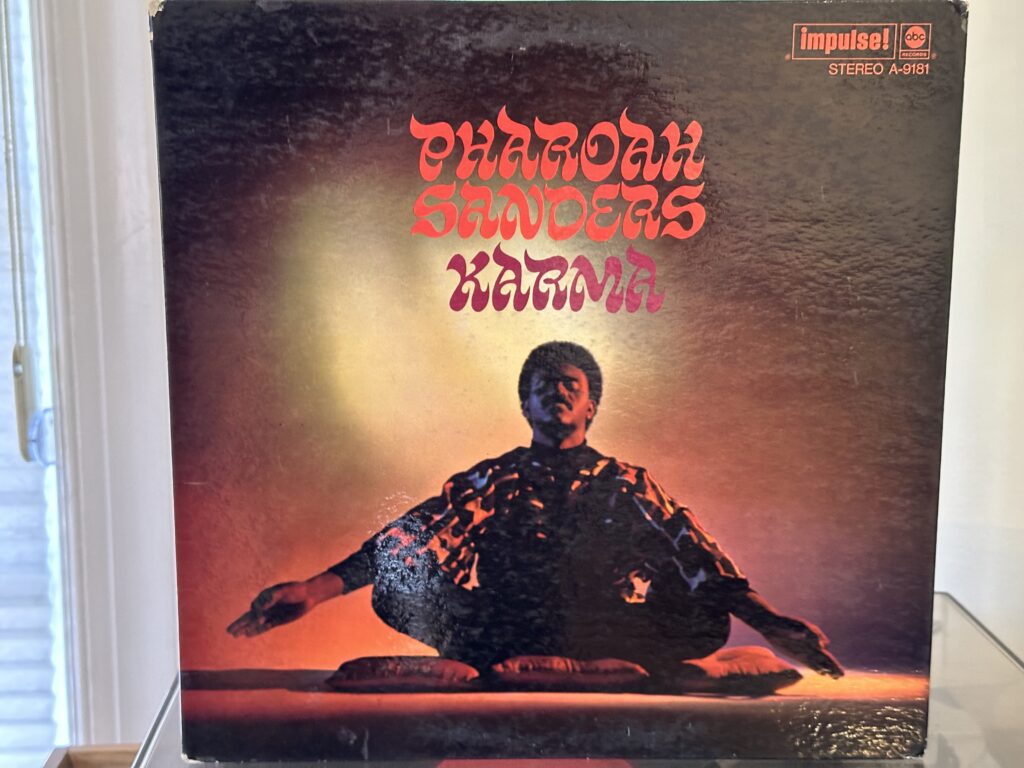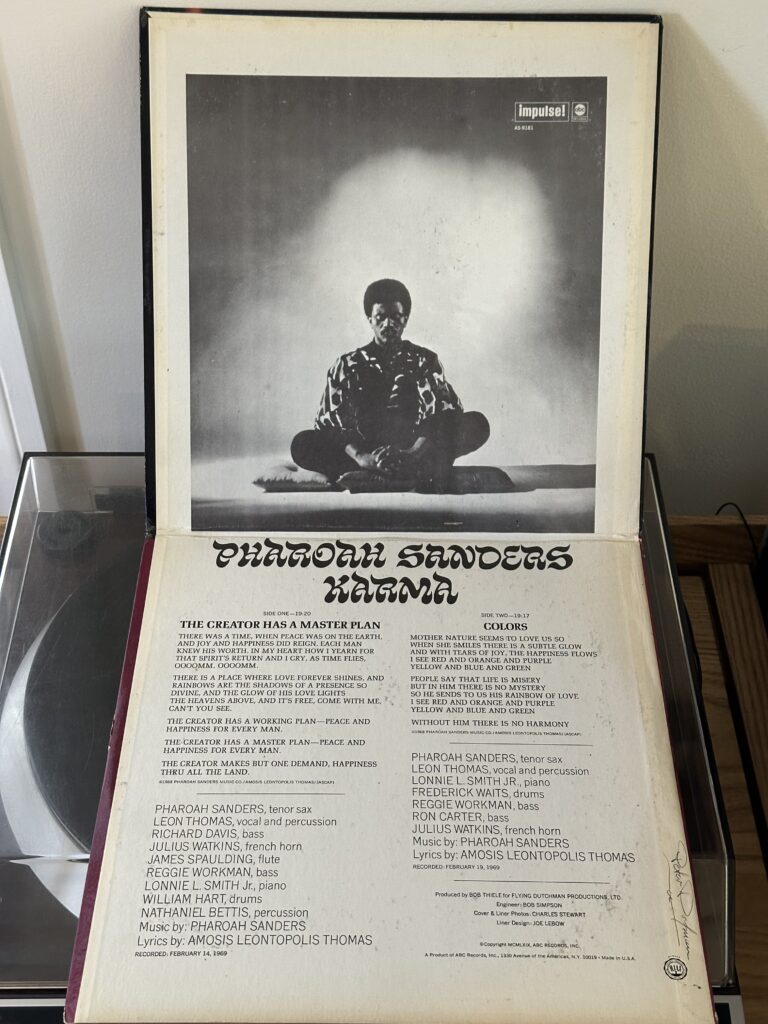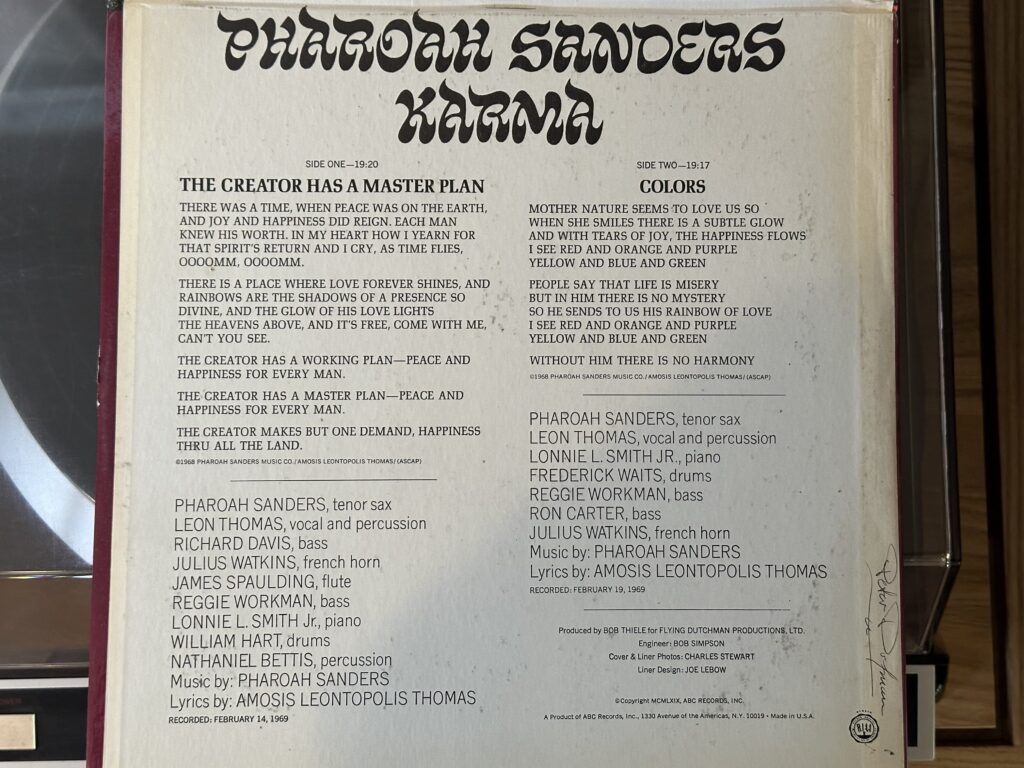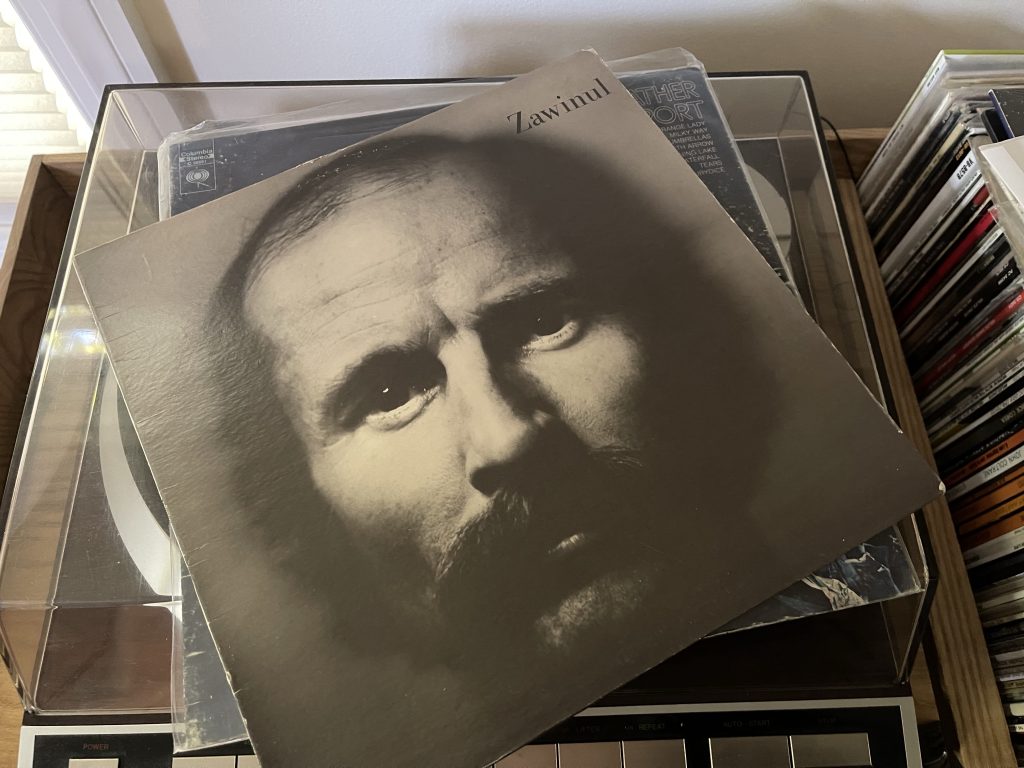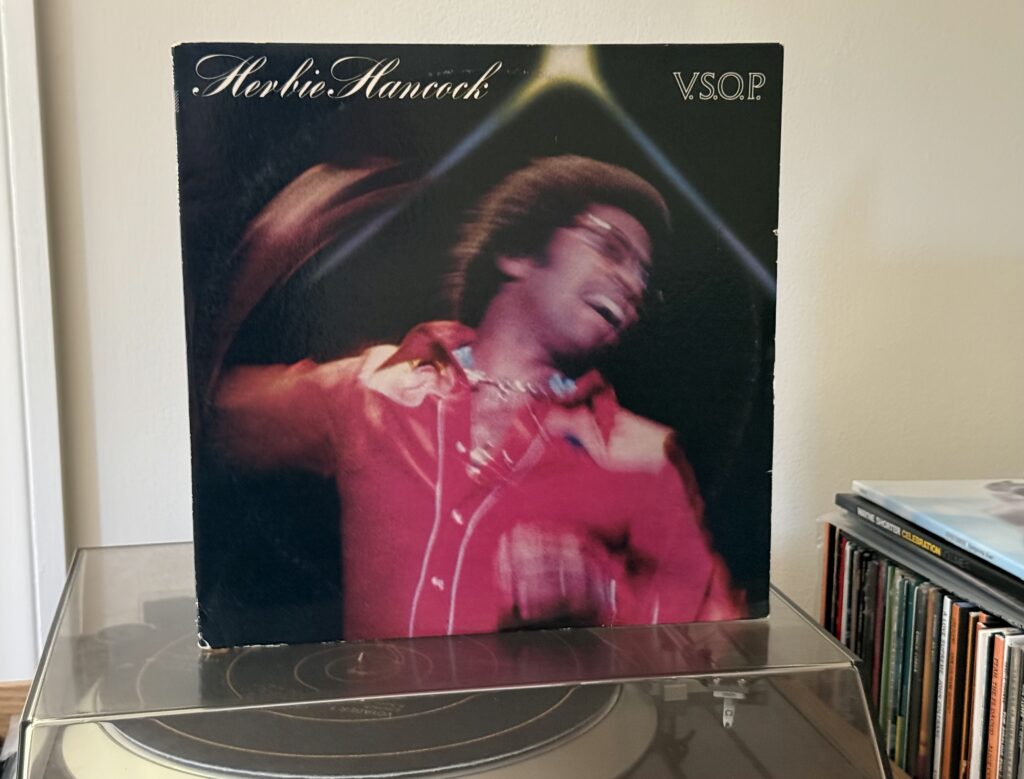
Album of the Week, October 19, 2024
What comes after a career arc like the one Herbie Hancock had from the early 1960s through 1976? We’ve talked about many of his Blue Note Records albums during this run—Takin’ Off, My Point of View, Inventions & Dimensions, Empyrean Isles, Maiden Voyage. We’ve written about a great many of his appearances as a sideman during that same time—Speak No Evil, The All Seeing Eye, Adam’s Apple, Schizophrenia, Life Time. We’ve written about his great run with Miles, from the early live appearance on Miles In Berlin through the untouchable run of E.S.P., Miles Smiles, Nefertiti, Miles in the Sky, Filles de Kilimanjaro, Water Babies and In a Silent Way. And we’ve touched on some of what he did in the late 1960s and 1970s, from more sideman appearances on Infinite Search, Zawinul, Road Song, Red Clay, Straight Life, First Light, Moon Germs, Sunflower, In Concert, Vol. 1, and Penny Arcade to his own classic Fat Albert Rotunda.
And, amazingly, that’s only a fraction of what he got up to during this time period. In particular, my record collection doesn’t cover the two great next phases of his career following Fat Albert Rotunda. First, he put together a sextet featuring Buster Williams on bass, Billy Hart on drums, Bennie Maupin on reeds, Julian Priester on trombone, and Eddie Henderson on trumpet, and recorded an amazing trio of out-there albums Mwandishi, Crossings, and Sextant. (I included one of the songs from Mwandishi on my collection of late-1960s/early-1970s “space jazz” from a few years ago; one of these days I’ll add that amazing album to my physical collection). And then he made a hard left turn into jazz-funk with his Headhunters band, famously after observing that his Mwandishi band and their impeccable explorations didn’t get nearly as much excitement from the audience as when the Pointer Sisters entered the venue on roller skates. The Headhunters band made six albums all told.
And after that? Well, in June of 1976, Herbie mounted a retrospective concert at the Newport Jazz Festival in New York City. Billed as covering three different stages of his career, the performance featured the then-current evolution of his jazz funk band, the reunion of the Mwandishi sextet, and what was billed as a reunion of the Miles Second Great Quintet—including Miles. That would have been quite a feat as Miles had temporarily retired by then, and had stopped playing acoustic jazz in favor of increasingly “out there” explorations of jazz fusion. On the night of the concert, a notice on the door stated that Miles couldn’t perform, and that appearing in his place would be trumpeter Freddie Hubbard. So effectively, what appeared during the first set was an amalgam of the Second Great Quintet and Herbie’s band on Maiden Voyage.
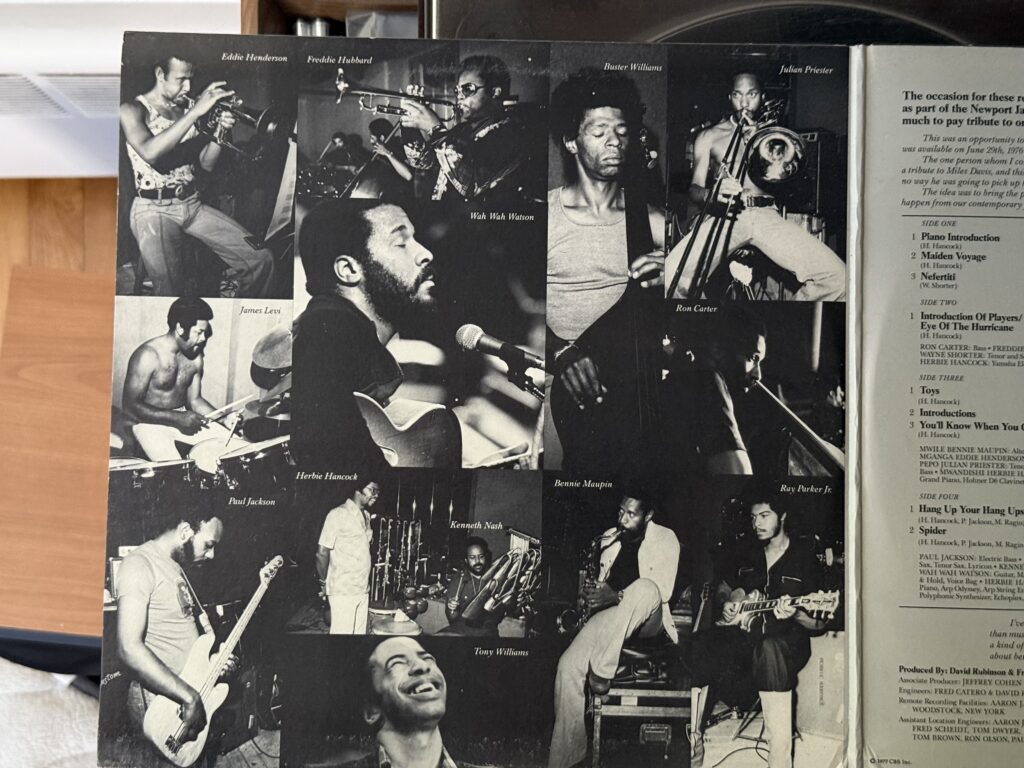
“Piano Introduction” features Herbie alone—not on the acoustic piano, but on a Yamaha Electric Grand Piano. He improvises across a series of chords, landing on a suspension on the 6th of the scale, then begins the opening chords of “Maiden Voyage” to the excited applause of the audience, who also give audio cues through their cheers as Ron Carter, Tony Williams, Wayne Shorter, and Hubbard take the stage. Carter, who by now has evolved a glissando technique on the strings that, along with amplification, renders his bass a more forthright presence, plays along with eight bars of the intro, before the rest of the band joins (the crowd cheering as the horns play the opening melody). Wayne Shorter takes the first solo, and at first it’s colored by his own experiments in jazz fusion; then he starts playing in bursts and runs, and it’s as if we’re hearing something like a straight line from his late-1960s works. When Freddie Hubbard comes in, it’s similarly informed by his precise, nuanced Blue Note playing rather than his jazz-funk work from the immediately preceding run on Columbia, which was even more commercial than his CTI work (which is really saying something). Throughout both horn solos, Carter keeps a steady double-time pulse, Williams drops bombs a-plenty, and Herbie sounds like he’s having the time of his life digging into the corners of this signature composition. A breath as Hubbard drops back to the slower tempo, and Hancock takes his solo, with a more prominent Carter underscoring the shifts in tonality with one glissando after another. Hancock likewise moves into the faster tempo until the wave crests and the band settles back into the rocking groove at the beginning.
The second number by the quintet, “Nefertiti” loses a little of its strangeness from its original incarnation with the Second Great Quartet; Hubbard isn’t quite as sure of his approach as was Miles, but the rest of the band carry ahead with gusto. Shorter in particular seems to have grown into the tune since its original writing, playing it at a brisker tempo, and the rhythm section freely innovate under it as on the original recording. At the very end, Hubbard gets comfortable enough to play with it, entering behind Shorter and setting up a dialog, and only then do we get to the dark strangeness at the heart of the tune.
Hancock gives us a tongue-in-cheek introduction to the players, declaring each of them “the greatest” as they enter with a quick solo, and then settling into a groove that becomes “Eye of the Hurricane” (also from Maiden Voyage) upon Shorter’s entry. He rips through a blistering improvisation that turns the corner into the quick chordal runs of the tune. Hubbard then rips a lightning fast solo, alongside which Hancock locks into a telepathic dialog. Shorter returns with another super-fast solo, playing runs at about twice the speed of Carter’s walking bass, before slowing down into a different rhythm and finally passing to Herbie. He follows the path of general mayhem that the others have blazed until, as though at a lookout point, he locks into a different groove entirely before hurtling back down the hill, as it were. The other players drop away as only Hancock, then Carter and Williams, go on playing in the relative stillness of the “eye.” You find yourself marveling that these musicians had never played together in this full configuration (though certainly the individual players had all collaborated many times over the years), and also that all of the above happened just on the first two sides of this double live album!
The Herbie Hancock Sextet, also known as the “Mwandishi” band, takes the stage with “Toys,” which actually predates the band, having originally been recorded on the Speak Like a Child album with a different lineup of players. That may explain why it feels like a completely different mood than the uncompromisingly avant-garde numbers the sextet was known for on their original three albums, but it serves as a pretty effective link from the material performed by the Quintet. Sonically, Eddie Henderson’s flugelhorn comes across with less of a brilliant edge than Freddie Hubbard’s trumpet but is no less adventurous. The sextet (after an introductory interlude in which Hancock introduces Henderson, Bennie Maupin, trombonist Julian Priester, Billy Hart, and Buster Williams as “the finest” and gives their Swahili as well as Christian names), then pivots into “You’ll Know When You Get There,” still the most mind-expanding of Hancock’s explorations into what he has called “space jazz.”
While not as long as the album version, this live rendition manages to get to the same strange heights. The composition alternates two different heads, or main melodies. The first melody features a melody in the trombone and flugelhorn in rising fourths and fifths that is repeated several times until suddenly everything stops and Henderson’s flugelhorn plays through a distorted effects pedal, as though disappearing down a dark tunnel—or entering a space warp. The band burbles beneath his improvisation until they come together in the second main melody, a five note pattern that rises in a major scale and falls in a minor one, that then links back to the first melody. Where in the album version there’s a solo opportunity for Priester and Maupin, here the tune ends on a quiet note from Hancock’s synthesizer.
The last side of the album is given over to jazz-funk with what’s here called “the Herbie Hancock Group,” consisting of “Wah Wah” Watson on guitar, Paul Jackson on electric bass, Bennie Maupin on saxophone, James Levi on drums, Kenneth Nash on percussion, and none other than Ray Parker Jr., of “Ghostbusters” fame, playing second guitar. “Hang Up Your Hangups” and “Spider” are tight jazz-funk workouts, unfortunately sounding dated to the modern listener thanks to the chicken-scratch guitar. There’s plenty to like in the sound, but it’s no Mwandishi band, and it doesn’t reach the improvisational heights of the quintet.

Some versions of jazz history call out V.S.O.P. as a pivot point in the history of the music, in which an audience that had grown fatigued with the ongoing jazz funk fusion trends of the decade could celebrate the resurgence of a more traditional style, paving the way for other neo-traditionalists to claim the stage as the 1970s turned into the 1980s. What seems clear is that Hancock, always the most commercially canny of the major jazz artists of the 1960s and 1970s, saw that there was an audience for the music—one that could fill an arena, as opposed to just a club. He would leverage this observation again, as we’ll hear next time.
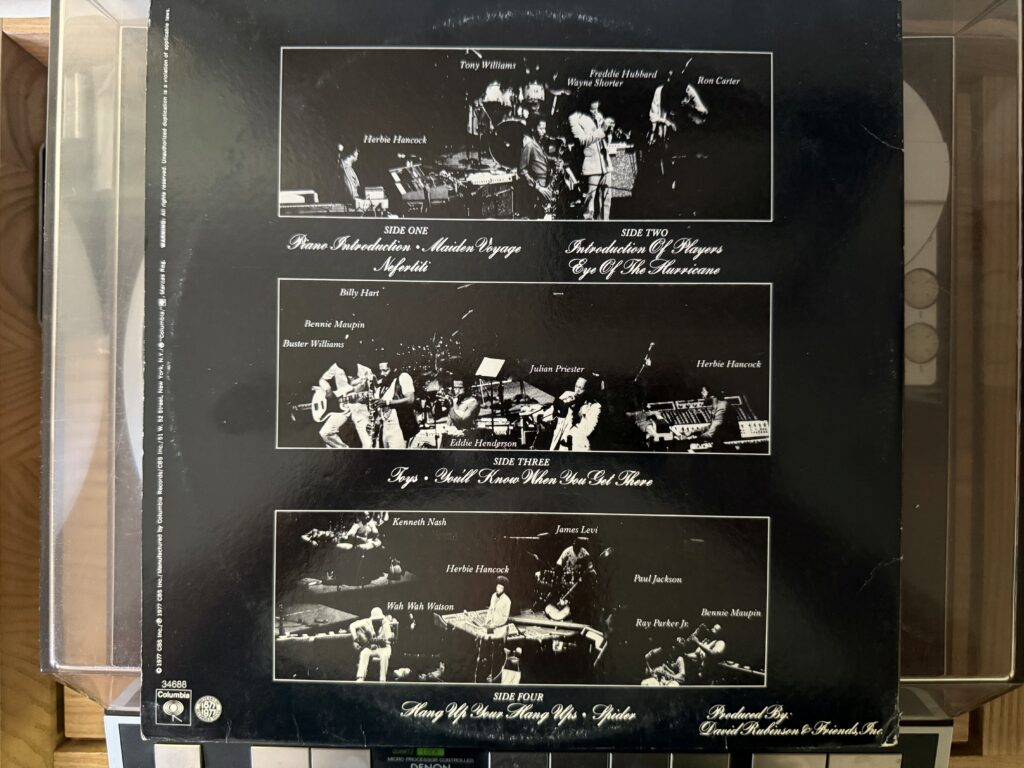
You can listen to this week’s album here:

